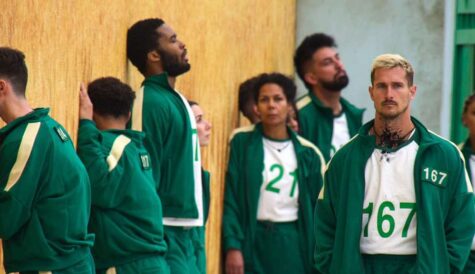Why it’s time for action over women’s sport docs
Sports docs have mushroomed over recent years, so why isn’t the explosion of interest in women’s sports being reflected on screen, asks Helen Dugdale.
This summer’s FIFA World Cup in Australia set the broadcast media ablaze with stories of female sports teams and individuals excelling in the world of football. But should it take a major international sporting event to give women’s sports the recognition and airtime they deserve?
Rebecca Sowden, former New Zealand Football Fern player and women’s sport sponsorship marketing consultant, believes that broadcasters and streamers should be doing a lot more. “While we have seen coverage improve generally in the past few years in various regions and at times when there are pinnacle events like the FIFA Women’s World Cup, it’s still only a fraction of what we see covered with men’s sport.
“Yes, we have seen huge impact and interest around the World Cup, but this level of coverage and interest isn’t the norm in New Zealand and Australia on a day-to-day basis,” she says.
New rules
UK-based author and documentary maker Sue Anstiss took it into her own hands to make Game On – The Unstoppable Rise Of Women’s Sport, a film that explores the growth in women’s sports and its impact across society.
Having written a best-selling book of the same name, Anstiss wanted to reach a wider audience with her stories and took the treatment for the 60-minute documentary round to broadcasters and streamers looking for UK distribution.
“I made Game On partly because there was nothing else out there in the sports space on the slate. Initially, the people we talked to loved the idea but said no in terms of commissioning. So, we self-funded it and then went back and got a great response, but decided to go with Netflix as we made the documentary with them in mind. I knew the power of the platform and their positioning around sport would allow us to reach and influence audiences,” she says.
Directed and produced by Anstiss and Jack Tompkins, Game On features interviews with some of the world’s most successful sports stars, such as boxing champion Stacey Copeland, alongside key sporting moments from 2022, including the UEFA European Women’s Championships, the Rugby World Cup and Katie Taylor and Amanda Serrano’s headline fight in Madison Square Gardens.
“Game On has resonated strongly, especially with people who work in sport. It has touched the audience I’d hoped it might reach – men, partners, dads, and brothers,” reveals Anstiss.
Human interest
Liz Tang, distributor, and executive director of acquisitions at Fifth Season, believes that documentaries and docuseries are the ideal format for telling stories from the world of sport.
She is part of the team responsible for distributing two well-received feature docs about women in sports. The Wall: Climb For Gold is a feature documentary that follows four female climbers as they attempt to compete in their first Olympic climbing competition at the Tokyo Olympics in 2020.
In My Name Is Ada, Norwegian football player Ada Herberger, the first-ever female winner of the Ballon d’Or trophy, tells the story of how she quit her national team and missed the World Cup, to empower women and change the power dynamic between men’s and women’s football.
“These two features stood out because of their premium nature and international appeal,” she says. “It’s not just about the sports piece, it’s about the human-interest story behind it. The Wall brought climbing to the masses and showed that it should be on the world stage.
“Sport is still one of the remaining must-have content for all broadcasters and all streamers across all platforms. TV has always held a great responsibility in changing society and the culture, so any light that is shone on unrepresented voices is only a good thing,’ adds Tang.
As well as making sure all sports are reflected on screen, Sowden is calling for more stories showing the lives of women off the pitch. “Historically, we’ve had to rely on the players themselves to provide fans with insight into these off-field stories on their personal social media channels. We hadn’t seen the investment in the likes of documentaries or longer-form content previously.
“I’ve loved seeing the recent introduction of docs around the Matilda’s and Angel City, but I’d like to see this trend continue. There are such unique and powerful stories to be told around female athletes and this is what we need to pull in new and casual fans along with ensuring an always-on presence.”
Celebrity catch-22
One issue Anstiss finds in meetings with commissioners is that they look for stories about celebrities that will help draw in the audience. However, that isn’t always possible when it comes to telling stories away from football.
“The issue we have for some women’s sport is that we haven’t had those celebrities as they haven’t had the coverage. So, until we’ve had the documentaries and we’ve had the back content, people won’t know them. I’d like broadcasters and production companies to recognise that there are great opportunities for shows in all women’s sports,” continues Anstiss.
With the increase in the coverage of the World Cup, WSL and Women’s Ashes, Anstiss is hopeful that more sponsorship will come, along with TV audiences and crowds, which in turn will inspire more shoulder content about both individuals and teams.
What is clear is that there is demand. More than 21 million people in the UK watched the BBC’s coverage of the World Cup this summer, and Sowden is now eager to continue banging the drum to ensure broadcasters show commitment to what happens behind the camera by investing in production standards.
“Major events or tournaments attract high production values, such as we saw at the World Cup. But we need to ensure the product is living up to expectations and ensuring the best possible viewing experience for fans, whether that’s more camera angles or the level of those cameras.
“While we need to balance commercial returns with free-to-air distribution, I still believe the benefits of making women’s sports more visible and accessible at this stage to ensure growth are essential so that it can then be better monetised in the future.”
What now for broadcast media and how can it better support women’s sports? With offices in America, Asia and Europe, Fifth Season is actively looking for international untold stories.
“Even if it’s a sport that has already been covered like football or basketball, if there is a new angle to it or new characters to shed light, we want to hear about them. I would love to see a breadth of sports covered, even down to what could be perceived as niche ones,’ says Tang.
Anstiss also wants her work to continue to inspire and tempt audiences about all the other stories out there still waiting to be told. “There is a richness in the stories around motherhood and all the things that women face and overcome. Sometimes content creators forget that because there has been that male bias across production companies and broadcasters.
“It’s become natural to go with what they know, and the names we recognise. I would encourage commissioners to be open-minded because the future is going to be about women’s sports. I want to turn on the TV and see loads more amazing women’s sports content.”





